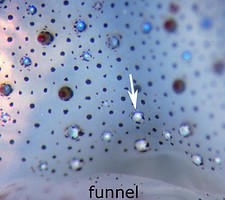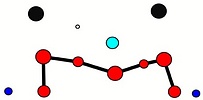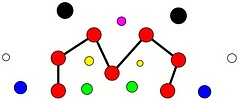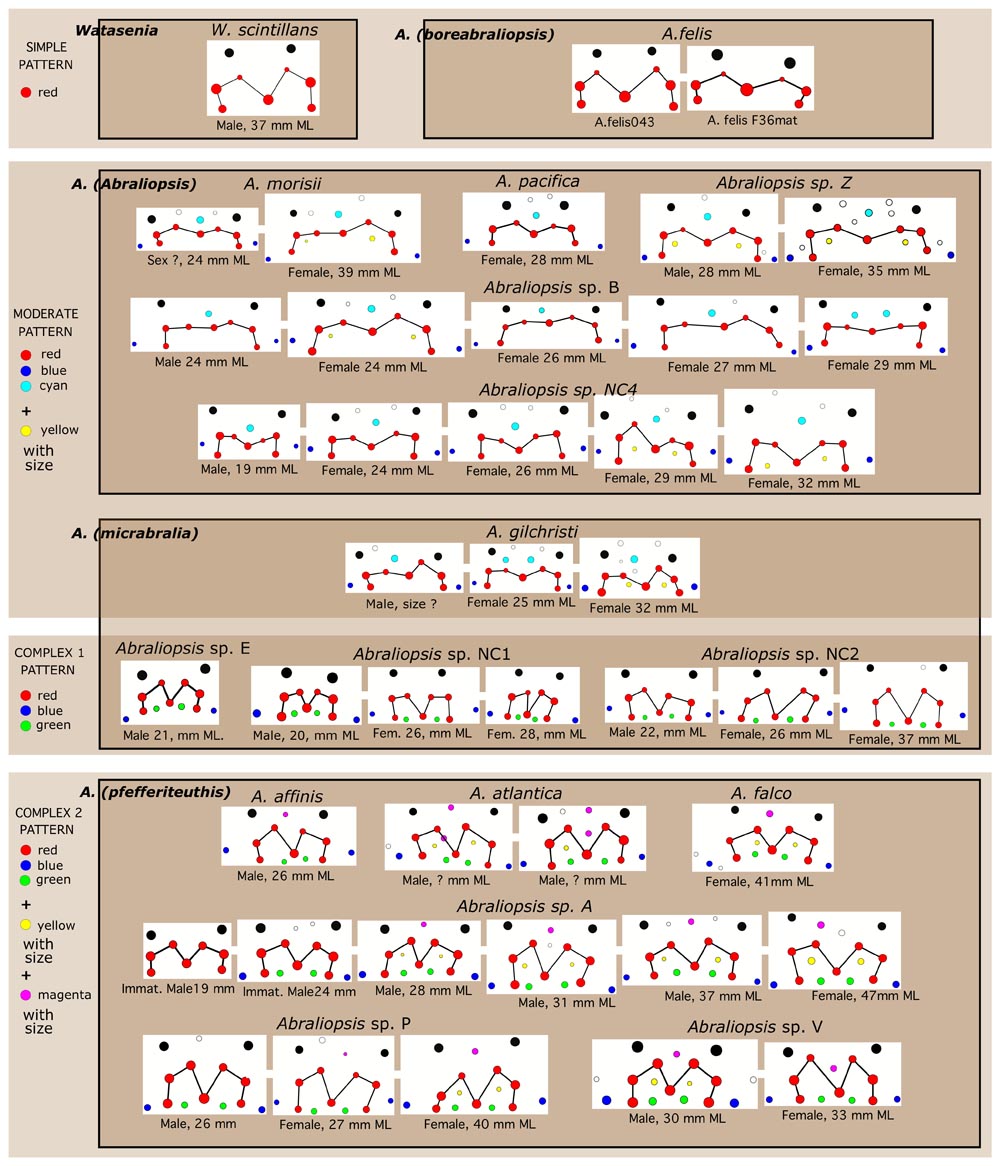First, a reminder what the white photophores of the funnel groove look like in a freshly caught, although dead, Abraliopsis (photograph to the left). Next look at a drawing of the pattern of white photophores derived from the photograph (drawing to the right). The dots, representing photophores within or adjacent to the funnel groove are given various colors in the drawing to aid in their recognition.
- Black dots (2) - These represent the most posterior of the complex (i.e., "red") photophores in the photograph and these mark the anterolateral edges of the funnel groove and are NOT "white" photophores but are included for orientation.
- Red dots (7) joined by a black line - Dots 1, 4 and 7 of this group are easy to recognize. These three are usually the largest of all the white photophores. Photophore 4 is always in the exact midline of the head and photophores 4 and 7 have a distinctive appearance apparently due to a structural difference. This group is common to all species of Watasenia and Abraliopsis examined.
- Cyan-colored dot (one, rarely two) - Found only in species having the Moderate Pattern although they can be easily confused with maroon dots appearing in members of the Complex 2 pattern. Above and to the left of the cyan dot is a small,
- Empty circle (1 - 6) - These, like the small circle above and to the left of the cyan dot in the right-side drawing, are often found at the anterior end or just beyond the funnel groove are of uncertain status as white photophores, or if found well within the groove, seem to be highly variable and of dubious systematic value.
- Blue dots (2). One of these is present lateral to each terminal red dot. They are the next most common type of dot, missing only in Watasenia scintillans and Abraliopsis felis.
Three additional types of dots (green, yellow and maroon), that are not present in the above example, are important.
- Green dots (2) - Each is positioned between the center red dot and a terminal red dot at the base line of the white photophores. Their position is quite consistent. These are found in all species having Complex 1 or 2 Patterns.
- Yellow dots (2) - Generally located within the arms of the red group but their position and occurrence is somewhat variable. They are easy to distinguish from the more basally located green dots when both are present. However, if only one of these two types is present, the decision can sometimes be difficult.
- Maroon dot (1-2) - It occupies approximately the same position as the cyan dot but is much more variable in size and position. It is found only in the Complex 2 Pattern.









 Go to quick links
Go to quick search
Go to navigation for this section of the ToL site
Go to detailed links for the ToL site
Go to quick links
Go to quick search
Go to navigation for this section of the ToL site
Go to detailed links for the ToL site